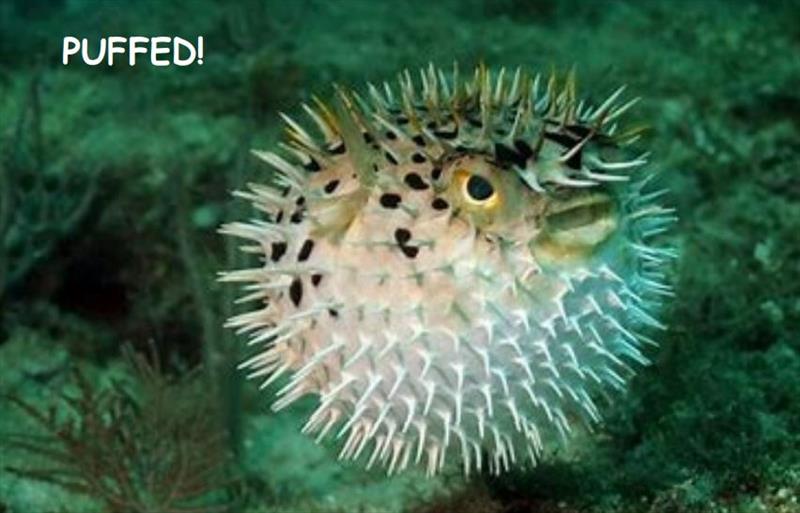
Creature Feature - The puffer fish
by Island Cruising NZ 10 May 2018 01:15 UTC

The puffer fish © Island Cruising NZ
The puffer fish (also known as the blowfish and the toadfish) is a medium- sized species of fish that inhabits warmer, coastal waters around the world. It is most well known for it's unique and distinctive adaptations that the puffer fish has to defend itself.
There are around 120 known species of puffer fish, the second most poisonous creature on the planet and is found in tropical waters worldwide, but they rarely go into the cooler waters.
The puffer fish has the remarkable ability to expand its body extremely quickly when faced with danger, unavailing it's long poisonous spikes that cover its body. If a fisherman catches a puffer fish, they will never touch the spikes as they are highly toxic to humans and animals.
It can grow to up to 60cm in length but the exact length of the puffer fish depends on the species of puffer fish. Puffer fish can be found in a variety of colours but can sometimes be hard to identify when they are not inflated. The puffer fish normally has the appearance of a large tadpole, with bulging eyes and an elongated snout.
They are omnivorous animals and eat a variety and plants and animals. Puffer fish mainly feed on the algae that grows on the rocks and coral and also the invertebrates that inhabit these areas. Large species will also eat shellfish such as shrimp and crabs and molluscs.
Although there are a number of animals that prey on the puffer fish, these predators often meet with a nasty end. When the puffer fish is threatened it inflates it's body with air exposing the long, sharp, toxic spikes which normally intimidates the predator into retreating. If however, an animal does manage to eat the puffer fish, it will often be poisoned by the toxins in the spikes or the toxin that is released from the organs of the puffer fish when it dies.
Despite the toxins in the puffer fish, some animals such as sharks are able to eat the puffer fish without becoming harmed. It is important also to know that not all species of puffer fish are actually poisonous and these species are preyed upon by larger fish, sharks and also humans.
Despite the puffer fish having such a deadly venom, there are some species of puffer fish whose meat is eaten in Japan and Korea as a local delicacy. Special chefs are trained to cut the fish so that the fish does not poison the consumer. Other species of puffer fish produce and release a toxin into their organs when they die to harm the thing that ate them.